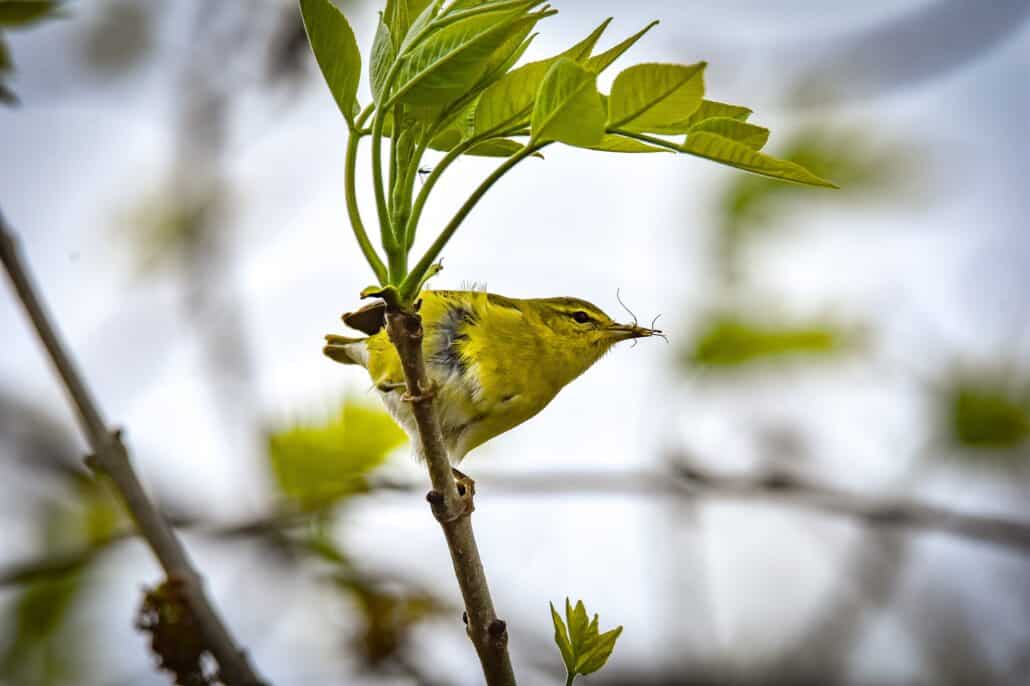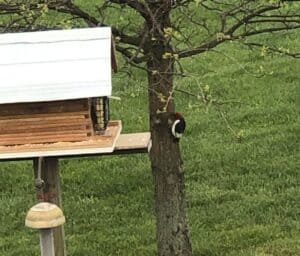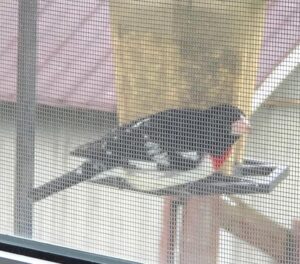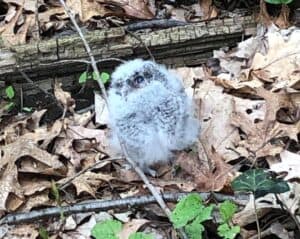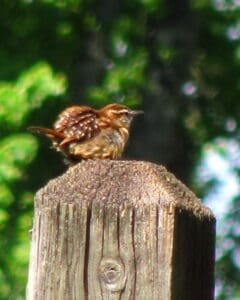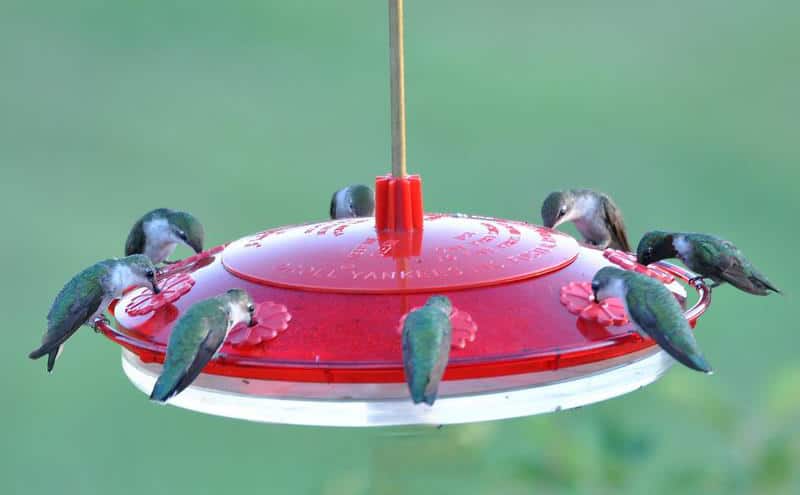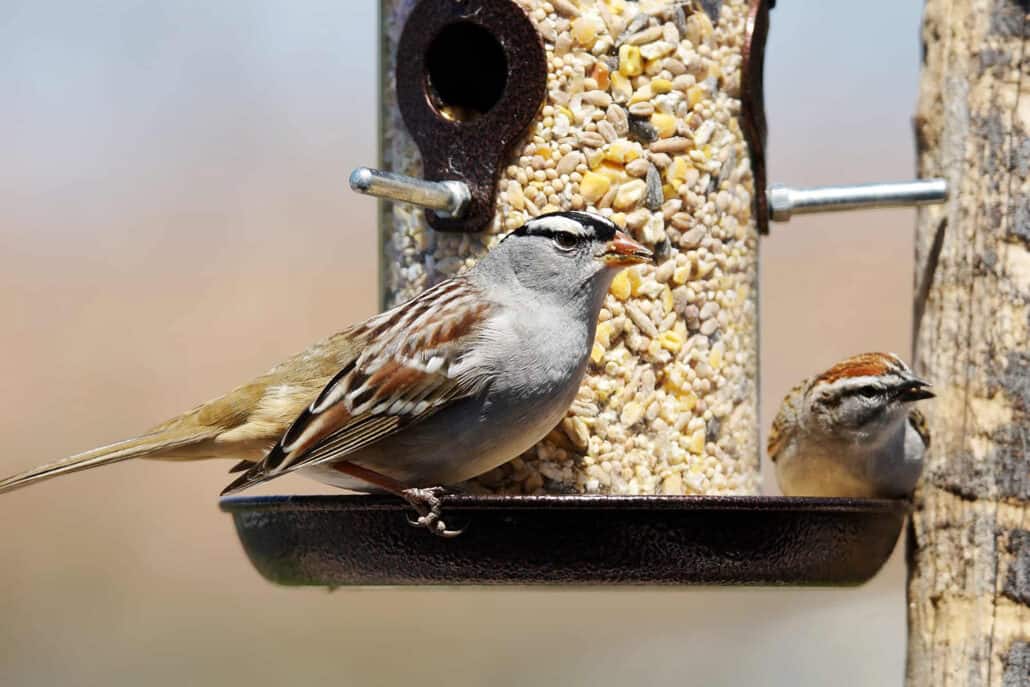One of my favorite perks of my job is that I get a fairly steady stream of texts, emails, and DMs asking for help identifying a bird. Most of the time I even know the answer! What tickles me most about this is who is doing the asking—friends from all areas of my life, often ones I’ve not talked to or seen in person for some years.
First, it thrills me that they (or someone they are asking on behalf of) have seen a bird and are intrigued enough to want to know more. Second, it makes me feel really good that they thought to ask me. I certainly don’t consider myself a bird ID expert, but I love testing my skills! And if I don’t know the answer, I have a great excuse to talk birds with some of my favorite mentors.
Just this past week, I received several of these queries, and I was envious of each of their sightings! (And I couldn’t help but wonder if the uptick in questions was somehow related to more people at home spending more time watching their feeders. I hope so!)
One friend I heard from is a former colleague from my days as a textbook editor. Heather wrote, “My mom has a bird question and I said I know someone I could ask. :) They have this woodpecker at their house and she was wondering what kind it might be.”
I was thrilled for Heather’s parents to have this majestic red-headed woodpecker visit them! One of my favorites, they are not all that common in Central Ohio, and are always a treat to see. (She has since updated me that her parents have now seen TWO of them!)
I also heard from Rachael, whom I haven’t talked to in some years, and I was glad she had a reason to say hello: “My sister had this bird come to her house, and I was curious if you were able to tell what kind it was.”
I was extra jealous of this rose-breasted grosbeak sighting, as it seemed like everyone around here had been spotting them, and I hadn’t seen my first of year yet. (I’ve since had several visit my yard—it appears to be a banner spring for them!)
Then one night my high school classmate Heather sent me a concerning message: “A baby owl fell out of its nest in my backyard. It’s still alive. Do you know what I can do?”
I didn’t get the message until morning, and I was hopeful that the bird had just fallen out of the nest and had perhaps climbed back up the tree, as owl fledglings sometimes do, but Heather and her family realized before I could reply that it was not well. They took it to a raptor rehabilitation center, and just this morning were updated that the owlet had several health issues but was holding its own and expected to survive.
My favorite part of Heather’s story is how her oldest son had immediately started researching to find out what kind of owl it was, correctly decided screech owl, and then found screech owl audio online that he played to try to comfort the baby, which he kept vigil over until his bedtime. What a compassionate little guy! I also love that her youngest son named the owl Oswald! What sweet, caring children my friend has raised, a reflection of her own heart no doubt.

Michelle is a newer friend who is a burgeoning bird photographer who captures gorgeous shots that I enjoy perusing on her Facebook page, and occasionally Michelle asks me for identification help. That was the case with this pine warbler—and I’ll be the first to admit I took one look at it and my mind went blank. Yellow warblers are hard! I have to relearn most of them every spring. Fortunately, one of my birder friends who is well-versed in warblers saw the post and bailed me out on this one. I appreciated the challenge, though, and that Michelle’s question prompted me to spend a little time in my well-worn copy of The Warbler Guide.
Last but not least, my sweet friend and freelance editor colleague Lisa posted this adorable shot of a Carolina wren to my Facebook timeline and asked, “Do you know if this is a young wren, or are the adults spotted too?”
Well, I did not know, and so I posed the question to Bird Watcher’s Digest’s editor, Dawn Hewitt, who immediately replied that a couple years ago one of our Watching Backyard Birds columnists, Julie Zickefoose, had written an article on this very question, and sent a copy of that article right over. In the column, called “The Wren’s Pajamas,” Julie explains that the function of this spotted plumage is to camouflage the bird while it is sleeping: “They face into a corner or crevice, fluff out their backs, and simply disappear, looking like pinecones, wood, fungus—anything but a bird.” How about that!
I will never tire of identifying birds or learning fun bird facts like the wren’s pajamas—which is a good thing since I’m pretty sure the supply of fun bird facts is bottomless and that birds will forever intrigue folks who want to know what it is exactly they’re looking at.
If you are stumped by a bird and would like assistance in playing bird detective, I’d love to hear from you! Just email me at [email protected]. I guarantee that if I don’t know the answer, I will have a lot of fun finding out! You might also try looking in the online bird identification guide on birdwatchersdigest.com. Check it out!

